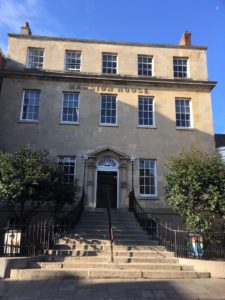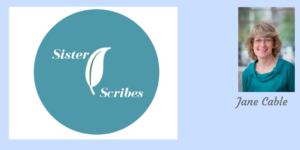For the first time in my writing life I am going back a couple of centuries. Not just with a glance over my shoulder, but really, properly back. With a good half of the novel taking place in 1815. It’s frightening – and exciting – and it’s requiring a great deal of research.
My research is centred on one family, their homes and their business interests. From that point of view, it should have been easy. Their country estate is in the hands of the National Trust, their town house still exists (albeit as offices) and their mine was one of the richest in Cornwall. What could possibly go wrong?
I knew before I started that nothing existed on the ground to show where the mine buildings once stood. I’ve walked past the field in roughly the right place numerous times, and apart from a few lumps and bumps, which may or may not be indicators, there is nothing there. What I didn’t expect was that the mine itself has almost completely disappeared from the records.
 There is a portrait of the owner though, and a copy of it is in St Agnes Museum. It’s labelled as showing Ralph and his mine captain, with the mine in the background. Perfect. Except the original of the same painting in the Royal Cornwall Museum says it’s Ralph’s father, and that the mine is unknown. When I eventually found some corroborating evidence, and given when the artist died, the RCM version is almost certainly right.
There is a portrait of the owner though, and a copy of it is in St Agnes Museum. It’s labelled as showing Ralph and his mine captain, with the mine in the background. Perfect. Except the original of the same painting in the Royal Cornwall Museum says it’s Ralph’s father, and that the mine is unknown. When I eventually found some corroborating evidence, and given when the artist died, the RCM version is almost certainly right.
This sort of thing has dogged my research. Sources you believe would be credible contradict each other. The National Trust had little to offer, telling me there was some confusion in the records as to which works on the house were completed by Ralph, and which by his son. Other sources claim more precision, but are they right?
My husband thinks this is a good thing, his theory being that if nobody really knows what happened, then no-one will know if I get it wrong. But as far as possible, I want to get it right. And thanks to the wonderful Courtney Collection at the RCM I am making progress. Not only are there some records of the mine (very little of it contemporary, however), but also an article from the 1960s about Truro’s Georgian townhouses. I popped in for an hour or two and stayed all day.
Herein lies the rub. The biggest danger of research isn’t necessarily the inaccuracies, it’s the rabbit holes. Does my story require me to know there were eleven shafts in the mine and their precise locations? I found myself becoming a total bore, pointing out to longsuffering walking friends exactly where they all were and the order they were dug. And how much a share in the mine was worth and how that was calculated. And the ages of the pumping engines. No, no, no. Completely irrelevant.
But all the same, it helped me to paint a picture, and some very useful facts did emerge. Like the mine was closed in 1814. It reopened later, but my novel deals in a very thin slice of time. And actually, the fact it was temporarily abandoned suits my story very well. Now I need to sift and sort through the rest of the information covering many pages in my notebooks, to work out what might be right – and what I actually need.
Oh, and I need to avoid any more rabbit holes and actually get writing.

